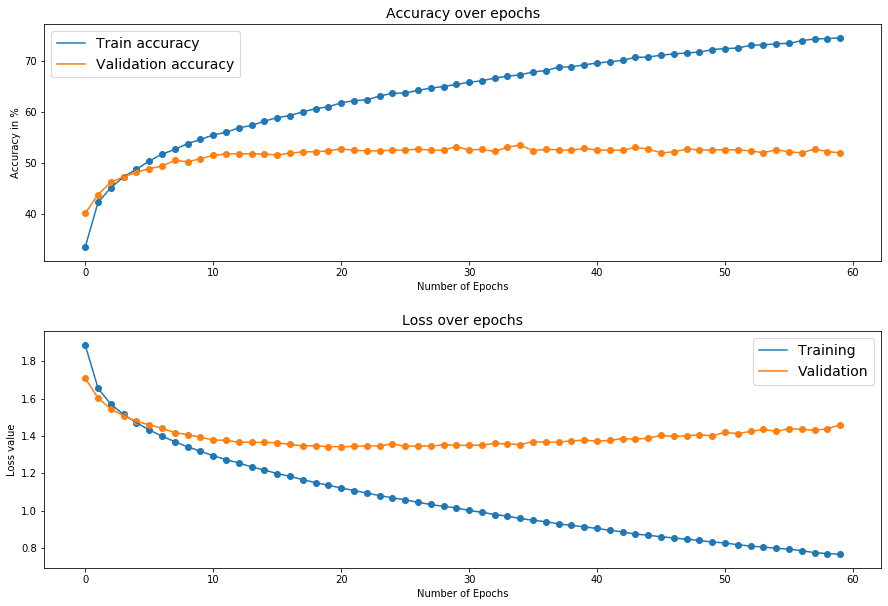Right here is my story: I just lately gave a college tutoring class to MSc college students on deep studying. Particularly, it was about coaching their first multi-layer perceptron (MLP) in Pytorch. I used to be actually shocked from their questions as freshmen within the discipline. On the identical time, I resonated with their struggles and mirrored again to being a newbie myself. That’s what this blogpost is all about.
If you’re used to numpy, tensorflow or if you wish to deepen your understanding in deep studying, with a hands-on coding tutorial, hop in.
We are going to prepare our very first mannequin known as Multi-Layer Perceptron (MLP) in pytorch whereas explaining the design selections. Code is available on github.
Shall we start?
Imports
import torch
import torch.nn as nn
import torch.nn.purposeful as F
import torch.optim as optim
import torchvision
import torchvision.transforms as transforms
import numpy as np
import matplotlib.pyplot as plt
The torch.nn package deal incorporates all of the required layers to coach our neural community. The layers should be instantiated first after which known as utilizing their situations. Throughout initialization we specify all our trainable elements. The weights usually reside in a category that inherits the torch.nn.Module class. Alternate options embrace the torch.nn.Sequential or the torch.nn.ModuleList class, which additionally inherit the torch.nn.Module class. Layers lessons usually begin with a capital letter even when they don’t have any trainable parameters so really feel like declaring them like:
The torch.nn.purposeful incorporates all of the features that may be known as immediately with out prior initialization. Mosttorch.nn modules have their corresponding mapping in a purposeful module like:
A really useful instance of a perform I usually use is the normalize perform:
Gadget: GPU
College students despise utilizing the GPU. They don’t see any motive to since they’re solely utilizing tiny toy datasets. I counsel them to suppose by way of scaling up the fashions and the info, however I can see it’s not that apparent at first. My answer was to assign them to coach a resnet18 in 100K picture dataset in google colab.
machine = 'cuda:0' if torch.cuda.is_available() else 'cpu'
print('machine:', machine)
There’s one and just one motive we use the GPU: velocity. The identical mannequin will be educated a lot a lot sooner in a high-end GPU.
Nonetheless, we need to have the choice to modify to the CPU execution of our pocket book/script, by declaring a “machine” variable on the high.
Why? Properly, for debugging!
It’s fairly frequent to have GPU-related errors, which are literally easy logical errors, however as a result of the code is executed on the GPU, pytorch just isn’t in a position to hint again the error correctly. Examples might embrace slicing errors, like assigning a tensor of incorrect form to a slice of one other tensor.
The answer is to run the code on the CPU as a substitute. You’ll most likely get a extra correct error message.
GPU message instance:
RuntimeError: CUDA error: device-side assert triggered
CUDA kernel errors could be asynchronously reported at another API name,so the stacktrace under could be incorrect.
For debugging contemplate passing CUDA_LAUNCH_BLOCKING=1.
CPU message instance:
Index 256 is out of bounds
Picture transforms
We are going to use a picture dataset known as CIFAR10 so we might want to specify how the info shall be fed within the community.
remodel = transforms.Compose([transforms.ToTensor(), transforms.Normalize(mean=(0.5, 0.5, 0.5), std=(0.5, 0.5, 0.5))])
Normally pictures are learn from reminiscence pillow pictures or as numpy arrays. We thus must convert them to tensors. I gained’t go into particulars into what pytorch tensors right here. The vital factor is to know that we are able to monitor gradients of a tensor and transfer them within the GPU. Numpy and pillow pictures do not present GPU help.
Enter normalization brings the values round zero. One worth for the means and std is offered for every channel. If you happen to present just one worth for the imply or std, pytorch is sensible sufficient to repeat the worth for all channels (transforms.Normalize(imply=0.5, std=0.5) ).
The pictures are within the vary of . After subtracting 0.5 and dividing by 0.5 the brand new vary shall be .
Assuming that the weights are additionally initialized round zero, that’s fairly useful. In follow, it makes the coaching a lot simpler to optimize. In deep studying we like to have our values round zero as a result of the gradients are far more secure (predictable) on this vary.
Why we want enter normalization
If the photographs have been within the vary that will disrupt the coaching far more severely. Why? Assuming that the weights initialized round 0, the output of the layer could be principally dominated by massive values, therefore the big picture intensities. That signifies that the weights will solely be influenced by the big enter values.
To persuade you I wrote a small script for that:
x = torch.tensor([1., 1., 255.])
w = torch.tensor([0.1, 0.1, 0.1], requires_grad=True)
goal = torch.tensor(10.0)
for i in vary(100):
with torch.no_grad():
w.grad = torch.zeros(3)
l = goal - (x*w).sum()
l.backward()
w = w - 0.01 * w.grad
print(f"Remaining weights {w.detach().numpy()}")
Which outputs:
Remaining weights [ 0.11 0.11 2.65]
In essence, solely the load that corresponds to the big enter worth adjustments.
The CIFAR10 picture dataset class
trainset = torchvision.datasets.CIFAR10(root='./knowledge', prepare=True, obtain=True, remodel=remodel)
valset = torchvision.datasets.CIFAR10(root='./knowledge', prepare=False, obtain=True, remodel=remodel)
Pytorch gives a few toy dataset for experimentation. Particularly, CIFAR10 has 50K coaching RGB pictures of dimension 32×32 and 10K check samples. By specifying the boolean prepare variable we get the prepare and check respectively. Knowledge shall be downloaded within the root path. The required transforms shall be utilized whereas getting the info. For now we’re simply rescaling the picture intensities to .
The three knowledge splits in machine studying
Sometimes we now have 3 knowledge splits: the prepare, validation and check set. The principle distinction between the validation and check set is that the check set shall be seen solely as soon as. The validation efficiency metrics could be dependable to trace the efficiency throughout coaching, although the mannequin’s parameters won’t be immediately optimized from the validation knowledge. Nonetheless, we use the validation knowledge to decide on hyperparameters corresponding to studying charge, batch dimension and weight decay (aka L2 regularization).
The right way to entry this knowledge?
Visualize pictures and perceive label representations
def imshow(img, i, imply, std):
unnormalize = transforms.Normalize((-imply / std), (1.0 / std))
plt.subplot(1, 10 ,i+1)
npimg = unnormalize(img).numpy()
plt.imshow(np.transpose(npimg, (1, 2, 0)))
img, label = trainset[0]
print(f"Photos have a form of {img.form}")
print(f"There are {len(trainset.lessons)} with labels: {trainset.lessons}")
plt.determine(figsize = (40,20))
for i in vary(10):
imshow(trainset[i][0], i, imply=0.5, std=0.5)
print(f"Label {label} which corresponds to {trainset.lessons[label]} shall be transformed to one-hot encoding by F.one_hot(torch.tensor(label),10)) as: ", F.one_hot(torch.tensor(label),10))
Right here is the output:
Photos have a form of torch.Dimension([3, 32, 32])
There are 10 with labels: ['airplane', 'automobile', 'bird', 'cat', 'deer', 'dog', 'frog', 'horse', 'ship', 'truck']

Instance pictures from the Cifar10 dataset
Every picture label shall be assigned one class id:
id=0 → airplane
id=1 → vehicle
id=2 → fowl
. . .
The category indices shall be transformed to one-hot encodings. You are able to do this manually as soon as to be 100% certain what it means by calling:
Label 6 which corresponds to frog shall be transformed to one-hot encoding by F.one_hot(torch.tensor(label),10)) as: tensor([0, 0, 0, 0, 0, 0, 1, 0, 0, 0])
The Dataloader class
train_loader = torch.utils.knowledge.DataLoader(trainset, batch_size=256, shuffle=True)
val_loader = torch.utils.knowledge.DataLoader(valset, batch_size=256, shuffle=False)
The usual follow is to make use of solely a batch of pictures as a substitute of the entire dataset at every step. That’s why the dataloader class stacks collectively quite a lot of pictures with their corresponding labels in a single batch at every step.
It’s essential to know that the coaching knowledge should be randomly shuffled.
This fashion, the info indices are randomly shuffled at every epoch. Thus, every batch of pictures is consultant of the info distribution of the entire dataset. Machine studying closely depends on the i.i.d. assumption which suggests impartial and identically distributed sampled knowledge. This means that the validation and check set must be sampled from the identical distribution because the prepare set.
Let’s summarize the dataset/dataloader half:
print("Record of label names are:", trainset.lessons)
print("Whole coaching pictures:", len(trainset))
img, label = trainset[0]
print(f"Instance picture with form {img.form}, label {label}, which is a {trainset.lessons[label]} ")
print(f'The dataloader incorporates {len(train_loader)} batches of batch dimension {train_loader.batch_size} and {len(train_loader.dataset)} pictures')
imgs_batch , labels_batch = subsequent(iter(train_loader))
print(f"A batch of pictures has form {imgs_batch.form}, labels {labels_batch.form}")
The output of the above code is:
Record of label names are: ['airplane', 'automobile', 'bird', 'cat', 'deer', 'dog', 'frog', 'horse', 'ship', 'truck']
Whole coaching pictures: 50000
Instance picture with form torch.Dimension([3, 32, 32]), label 6, which is a frog
The dataloader incorporates 196 batches of batch dimension 256 and 50000 pictures
A batch of pictures has form torch.Dimension([256, 3, 32, 32]), labels torch.Dimension([256])
Constructing a variable dimension MLP
class MLP(nn.Module):
def __init__(self, in_channels, num_classes, hidden_sizes=[64]):
tremendous(MLP, self).__init__()
assert len(hidden_sizes) >= 1 , "specify at the least one hidden layer"
layers = nn.ModuleList()
layer_sizes = [in_channels] + hidden_sizes
for dim_in, dim_out in zip(layer_sizes[:-1], layer_sizes[1:]):
layers.append(nn.Linear(dim_in, dim_out))
layers.append(nn.ReLU())
self.layers = nn.Sequential(*layers)
self.out_layer = nn.Linear(hidden_sizes[-1], num_classes)
def ahead(self, x):
out = x.view(x.form[0], -1)
out = self.layers(out)
out = self.out_layer(out)
return out
Since we inherit the torch.nn.Module class, we have to outline the init and ahead perform. init has all of the layers appended within the nn.ModuleList(). Module checklist is simply an empty checklist that’s conscious that each one the weather of the checklist are modules of the torch.nn package deal. Then we put all the weather of the checklist to torch.nn.Sequential. The asterisk (*) signifies that the layers shall be handed as every layer being one enter of the perform like:
torch.nn.Sequential( nn.Linear(1,2), nn.ReLU(), nn.Linear(2,5), ... )
When there aren’t any skip connections inside a block of layers and there is just one enter and one output, we are able to simply cross all the pieces within the torch.nn.Sequential class. Consequently, we won’t must repeatedly specify that the output of the earlier layer is the enter to the subsequent one.
Throughout ahead we are going to simply name it as soon as:
y = self.layers(x)
That makes the code far more compact and straightforward to learn. Even when the mannequin contains various ahead paths fashioned by skip connections, the sequential half will be properly packed like this.
Writing the validation loop
def validate(mannequin, val_loader, machine):
mannequin.eval()
criterion = nn.CrossEntropyLoss()
right = 0
loss_step = []
with torch.no_grad():
for inp_data, labels in val_loader:
labels = labels.view(labels.form[0]).to(machine)
inp_data = inp_data.to(machine)
outputs = mannequin(inp_data)
val_loss = criterion(outputs, labels)
predicted = torch.argmax(outputs, dim=1)
right += (predicted == labels).sum()
loss_step.append(val_loss.merchandise())
val_acc = (100 * right / len(val_loader.dataset)).cpu().numpy()
val_loss_epoch = torch.tensor(loss_step).imply().numpy()
return val_acc , val_loss_epoch
Assuming we now have a classification activity, our loss shall be categorical cross entropy. If you wish to dive into why we use this loss perform check out maximum likelihood estimation.
In the course of the validation/check time, we want to ensure of two issues. First, no gradients must be tracked, since we’re not updating the parameters at this stage. Second, the mannequin behaves as it could behave throughout check time. Dropout is a good instance: throughout coaching we zero % of the activations, whereas at check time it behaves like an id perform ().
-
with torch.no_grad():can be utilized to ensure we’re not monitoring gradients. -
mannequin.eval()mechanically adjustments the conduct of our layers to the check conduct. We have to name mannequin.prepare() to undo its impact.
Subsequent we have to transfer the info to the GPU. We preserve utilizing the variable machine to have the ability to swap between GPU and CPU execution.
outputs = mannequin(inputs)calls the ahead perform and computes the unnormalized output prediction. Folks normally check with the unnormalized predictions of the mannequin as logits. Be certain you don’t get misplaced within the jargon jungle.
The logits shall be normalized with softmax and the loss is computed. Throughout the identical name (criterion(outputs, labels)) the goal labels are transformed to 1 scorching encodings.
Here’s a factor that many college students get confused on: the way to compute the accuracy of the mannequin. We have now solely seen the way to compute the cross entropy loss. Properly, the reply is somewhat easy: take the argmax of the logits.This provides us the prediction. Then, we evaluate how most of the predictions are equal to the targets.
The mannequin will study to assign larger chances to the goal class. However so as to compute the accuracy we have to see how most of the most chances are the right ones. For that one can use predicted = torch.max(outputs, dim=1)[1] or predicted = torch.argmax(outputs, dim=1). torch.max() returns a tuple of the max values and indices and we’re solely within the latter.
One other attention-grabbing factor is the worth.merchandise() name. This methodology can solely be used for scalar values just like the loss features. For tensors we normally do one thing like t.detach().cpu().numpy(). Detach makes certain no gradients are tracked. Then we transfer it again to the cpu and convert it to a numpy array.
Lastly discover the distinction between len(val_loader) and len(val_loader.dataset). len(val_loader) returns the entire variety of batches the dataset was break up into. len(val_loader.dataset) is the variety of knowledge samples.
Writing the coaching loop
def train_one_epoch(mannequin, optimizer, train_loader, machine):
mannequin.prepare()
criterion = nn.CrossEntropyLoss()
loss_step = []
right, whole = 0, 0
for (inp_data, labels) in train_loader:
labels = labels.view(labels.form[0]).to(machine)
inp_data = inp_data.to(machine)
outputs = mannequin(inp_data)
loss = criterion(outputs, labels)
optimizer.zero_grad()
loss.backward()
optimizer.step()
with torch.no_grad():
_, predicted = torch.max(outputs, 1)
whole += labels.dimension(0)
right += (predicted == labels).sum()
loss_step.append(loss.merchandise())
loss_curr_epoch = np.imply(loss_step)
train_acc = (100 * right / whole).cpu()
return loss_curr_epoch, train_acc
def prepare(mannequin, optimizer, num_epochs, train_loader, val_loader, machine):
best_val_loss = 1000
best_val_acc = 0
mannequin = mannequin.to(machine)
dict_log = {"train_acc_epoch":[], "val_acc_epoch":[], "loss_epoch":[], "val_loss":[]}
pbar = tqdm(vary(num_epochs))
for epoch in pbar:
loss_curr_epoch, train_acc = train_one_epoch(mannequin, optimizer, train_loader, machine)
val_acc, val_loss = validation(mannequin, val_loader, machine)
msg = (f'Ep {epoch}/{num_epochs}: Accuracy: Prepare:{train_acc:.2f} Val:{val_acc:.2f}
|| Loss: Prepare {loss_curr_epoch:.3f} Val {val_loss:.3f}')
pbar.set_description(msg)
dict_log["train_acc_epoch"].append(train_acc)
dict_log["val_acc_epoch"].append(val_acc)
dict_log["loss_epoch"].append(loss_curr_epoch)
dict_log["val_loss"].append(val_loss)
return dict_log
mannequin.prepare()switches again the layers (e.g. dropout, batch norm) to their coaching behaviour.
The principle distinction is that backpropagation and the replace rule come into play right here via:
loss = criterion(outputs, labels)
optimizer.zero_grad()
loss.backward()
optimizer.step()
First, loss should all the time be a scalar. Second, every trainable parameter has an attribute known as grad. This attribute is a tensor of the identical form of the tensor the place gradients are saved. By calling optimizer.zero_grad() we undergo all of the parameters and exchange the gradient values of the tensor to zero. In pseudocode:
for param in parameters:
param.grad = 0
Why? As a result of the brand new gradients should be computed throughout loss.backward(). Throughout a backward name the gradients are computed and added to the previously-existing values.
for param, new_grad in zip(parameters, new_gradients):
param.grad = param.grad + new_grad
That provides quite a lot of flexibility with respect to how usually we might replace our mannequin. This could be useful as an example to coach with an even bigger batch dimension than our {hardware} permits us to, a way known as gradient accumulation.
In lots of instances we have to replace the parameters at every step. Thus, the gradients should be saved whereas deleting the values from the earlier batch.
Computing the gradients just isn’t updating the parameters. We have to go as soon as once more via all of the mannequin’s parameters and apply the replace rule with optimizer.step() like:
for param in parameters:
param = param - lr * param.grad
The remaining is identical as within the validation perform. Each losses and accuracies per epoch are saved in a dictionary for plotting afterward.
Placing all of it collectively
in_channels = 3 * 32 * 32
num_classes = 10
hidden_sizes = [128]
epochs = 50
lr = 1e-3
momentum = 0.9
wd = 1e-4
machine = "cuda"
mannequin = MLP(in_channels, num_classes, hidden_sizes).to(machine)
optimizer = optim.SGD(mannequin.parameters(), lr=lr, momentum=momentum, weight_decay=wd)
dict_log = prepare(mannequin, optimizer, epochs, train_loader, val_loader, machine)
Greatest validation accuracy: 53.52% on CIFAR10 utilizing a two layer MLP.

Losses and accuracies throughout coaching.
Design selections
So how do you design and prepare an MLP neural community?
-
Batch dimension: very small batch sizes, usually < 8, might result in unstable coaching and even fail, due to numerical points. The default in a PyTorch Dataloader is 1, so make sure that to all the time specify the batch dimension! As soon as a scholar was complaining that coaching takes 3 hours (as a substitute of 5 minutes) as a result of he forgot to specify the batch dimension. Use multiples of 32 for max GPU utilization, if doable.
-
Impartial and Identically Distributed (IID): batches ought to ideally observe the IID assumption, so remember to all the time shuffle your coaching knowledge, except you may have a really particular motive to not.
-
All the time go from easy to advanced design selections when designing fashions. By way of mannequin structure and dimension this interprets to ranging from a small community. Go huge in the event you suppose that efficiency saturates. Why? As a result of a small mannequin might already carry out sufficiently effectively in your use-case. Within the meantime, you save tons of time, since smaller fashions will be coaching sooner. Picture that in a real-life situation you’ll need to coach your mannequin a number of instances to resolve the most effective setup. And even retrain it as extra knowledge turns into accessible.
-
All the time shuffle your coaching knowledge. Don’t shuffle the validation and check set.
-
Design versatile mannequin implementations. Though we begin small and use solely a hidden layer, there’s nothing stopping us from going huge. Our mannequin implementation helps us having as many layers as we wish. In follow, I’ve not often seen an MLP with greater than 3 layers and greater than 4096 dimensions.
-
Improve mannequin dimensions in multiples of 32. The optimization area is insanely enormous and makes clever selections like taking account of the {hardware} (GPU).
-
Add regularization after you establish overfitting and never earlier than.
-
If in case you have no thought concerning the mannequin dimension, begin by overfitting a small subset of information with out augmentations (verify torch.utils.data.Subset).
To persuade you much more, here is a web based tutorial that somebody used 3 hidden layers in CIFAR10 and achieved the identical validation accuracy as us (~53%).
Conclusion & the place to go subsequent
Is our classifier adequate?
Properly, sure! In comparison with a random guess (1/10) we’re in a position to get the right class greater than 50%.
Is our classifier good in comparison with a human?
No, human-level picture recognition on this dataset would simply be greater than 90%.
What’s our classifier missing?
One can find out within the subsequent tutorial.
Please be aware your entire code is available on github. Keep tuned!
At this level you have to implement your personal fashions into new datasets. An instance: attempt to enhance your classifier much more by including regularization to forestall overfitting. Put up your outcomes on social media and tag us alongside.
Lastly, in the event you really feel such as you want a structured venture to get your arms soiled contemplate these further sources:
Or you may attempt our very personal course: Introduction to Deep Learning & Neural Networks
* Disclosure: Please be aware that a few of the hyperlinks above could be affiliate hyperlinks, and at no further value to you, we are going to earn a fee in the event you resolve to make a purchase order after clicking via.



 Viesearch - The Human-curated Search Engine
Blogarama - Blog Directory
Web Directory gma
Directory Master
http://tech.ellysdirectory.com
8e3055d3-6131-49a1-9717-82ccecc4bb7a
Viesearch - The Human-curated Search Engine
Blogarama - Blog Directory
Web Directory gma
Directory Master
http://tech.ellysdirectory.com
8e3055d3-6131-49a1-9717-82ccecc4bb7a